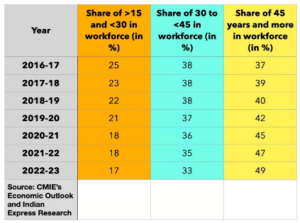| African Union |
|
| Fukushima Nuclear Plant Treated Water Disposal |
Reasons:
|
| Coast Guards of Philippines and India to Further Bond |
|
| Malabar Exercise |
|
| Parboiled Rice Export |
|
| Heal by India Initiative |
|
Context:
Recently, a new report ‘The Debt-Fossil Fuel Trap’, was published by the anti-debt campaigners Debt Justice and partners.
The “Debt-Fossil Fuel Trap”:
|
Key Takeaways from ‘The Debt-Fossil Fuel Trap’ report:
Global South:
|
Recommendations for a Sustainable Path Forward:
News Source: The Indian Express
Context:
The Union Minister of Road Transport and Highways launched the Bharat New Car Assessment Programme (Bharat NCAP).
About Bharat NCAP:
News Source: Livemint
Context: Outward remittances under the Reserve Bank of India’s (RBI’s) liberalised remittance scheme (LRS) surged by 50.64 per cent to $9.1 billion in the April-June quarter of 2023–24.
About Liberalised Remittance Scheme(LRS):
Hindu Undivided Family (HUF):
|
What has changed with the RBI’s circular Dated 22.06.2023?
|
News Source: Business Standard
Context:
According to a new study Methylotuvimicrobium Buryatense 5GB1C could potentially remove methane from major emission sites such as landfills, paddy fields, and oil and gas wells.
Key takeaways of Study:
Methanotrophs:
News Source: DTE
Context:
More about the news:
Centre for Monitoring Indian Economy (CMIE):
|
Highlights from the CMIE Survey:
Composition of the workforce by age group in India:

What is meant by an aging workforce?
Demographic dividend:
|
Challenges with aging workforce:
Government Initiatives towards welfare of elderly in India:
|
Way Forward:
|
News Source: Indian Express
SC Verdict on Newsclick Shows Adherence to Due Pro...
Stay Invested: On Chabahar and India-Iran Relation...
Credit Rating Agencies, Impact on India’s De...
Catapulting Indian Biopharma Industry
Globalisation Under Threat, US Import Tariffs Have...
Global Report on Hypertension, Global Insights and...
<div class="new-fform">
</div>
